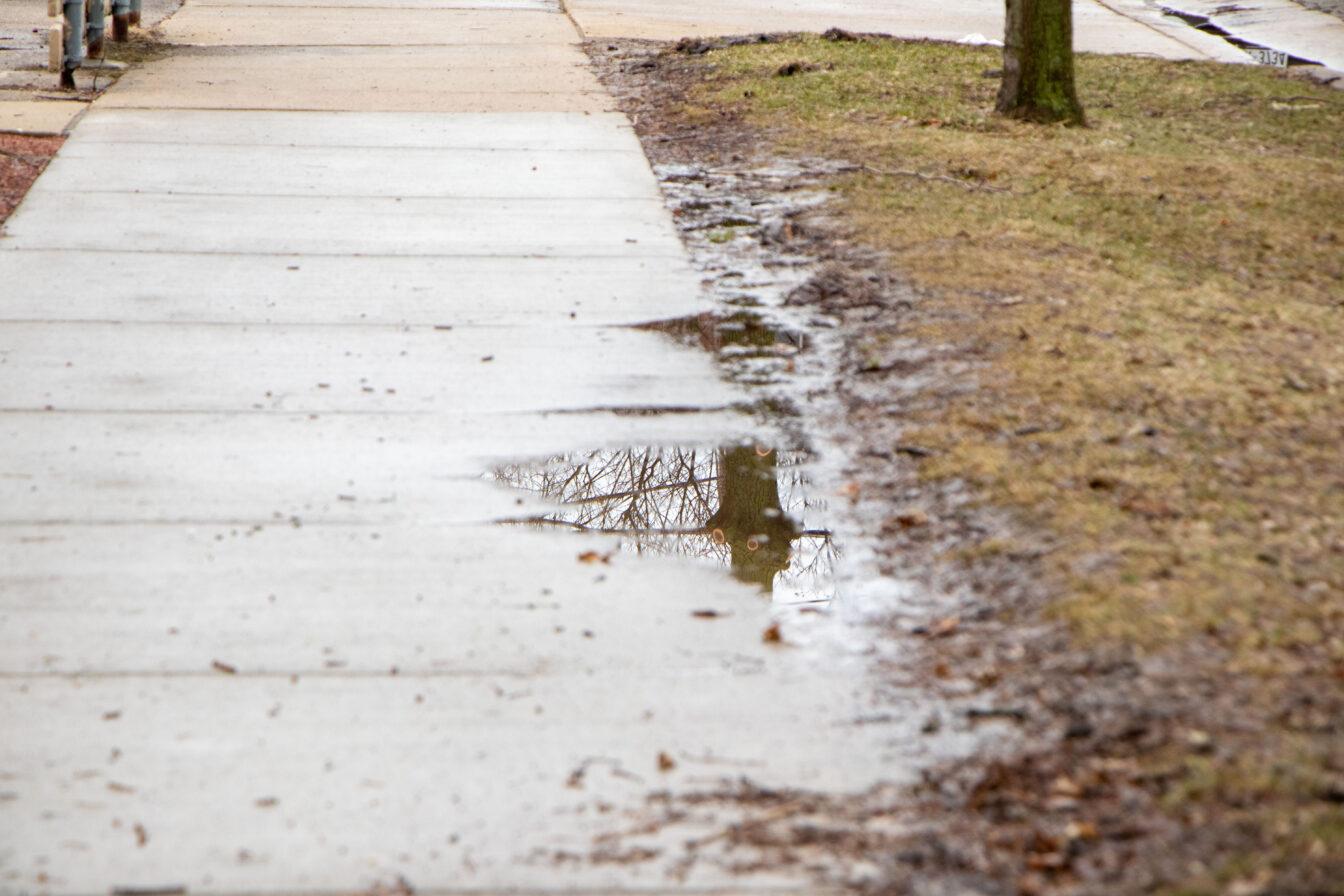With the spring equinox on March 20, Wisconsin’s rainy season began, along with rising temperatures and the final days of snow. The warming temperatures of spring, melting snow and precipitation prime much of Southern Wisconsin for sinkholes, according to University of Wisconsin hydrogeologist Maureen Muldoon.
In fact, a sinkhole opened up in January at Indianford County Park, just south of Edgerton, which required up to $425,500 in repairs.
Sinkholes are part of a karst landscape that forms when soft, soluble rocks, such as limestone or dolomite, dissolve with water. The soluble limestone and dolomitic rocks, combined with melting snow and rain showers, make spring a particularly vulnerable time of year for sinkholes to form, Muldoon said.
Karst landscapes include features such as cave components and sinkholes, UW geoscience program coordinator and researcher Ian Orland said. One example is not too far from Madison, Wisconsin — Cave of the Mounds.
Karst landscapes have existed for around 500 million years, long before humans could impact the landscape. Wisconsin was once a shallow ocean, and the sea levels fell, exposing limestone rocks and calcifying, or hardening, them, Muldoon said.
Cemeteries are often provide a good example of this when limestone gravestones become fuzzy and develop visible dissolution after so many years — a process humans are not a part of.
Just west of Madison was once an ice sheet that sat atop Madison and stretched to the North Pole, Orland said. When that ice sheet melted away, it left behind a slurry of soil, boulders and cobble, or what’s called glacial drift. The drift blanket covered some of the limestone rocks hundreds of feet below the surface, allowing the blanket to absorb any changes and making a big sinkhole opening at the surface less likely.
“So in that way, campus is a little bit shielded from some of those more dramatic sinkhole opening events that you might see in other karst areas right in the southwestern part of the state where the ice sheet didn’t reach,” Orland said.
In Southern Wisconsin, limestone and dolomitic rocks are very common, making the landscape more susceptible to sinkholes. Known as a “driftless area,” this is where limestone is much closer to the surface, which is why sinkholes are easier to see and more common at the surface, Orland said.
Besides the damage sinkholes make to the aboveground landscapes across the southern part of the state, they also impact the groundwater system and quality, Muldoon said. Specifically, the melted snowpack that makes its way below the surface is in part what causes sinkholes to form and leads to some groundwater contamination.
“It’s also [a time] where you can flush a lot of stuff into the groundwater system because it’s getting into the soil, and it’s going straight on down because it’s not getting used by plants and trees and crops,” Muldoon said.
During spring, an especially vulnerable time for sinkhole formation and groundwater contamination, there is seasonal spreading of manure on fields, which can get into the groundwater system. This can lead to “brown water events,” in which the water out of someone’s faucet turns brown because of the manure. The karst landscape, which underlies sinkhole formation, plays into this as well.
To combat these brown water events, Muldoon said Northeastern Wisconsin has been progressive in changing the date farmers can spread manure on their fields to after April 15. This change comes with the hope that the manure will stay in the soil zone and not enter someone’s well.
“Hydrogeologically, it makes the most sense to put your manure on when you have a growing crop — like do it in June, July, August where we have almost no groundwater recharge,” Muldoon said.
In some instances, there are “manmade,” or fake, sinkholes in which changing the drainage pattern of a natural karst landscape through construction can open up a sinkhole and lead to water main breaks, Muldoon said.
But, in most cases, sinkholes are caused by depressions in the landscape that humans have no control over. These sinkholes become problematic when that depression is located under something important, like a road, which makes it dangerous for cars.
The challenge with sinkholes, though, is the difficulty that comes with locating and mapping their location before constructing a building. Geophysics deals with seismic waves and electrical currents to image the subsurface, but this is tricky for small features far below the surface, Muldoon said.
Though sinkholes are natural and non-random, there are ways to treat the land so it is less susceptible to their formation.
“What you want to try to do is provide a pathway for the water where you’re not continuing to lose sediment,” Muldoon said. “And so there’s engineering studies and best management practice as to how to fill a sinkhole … gradually [decreasing] in size from bigger particles to little pebbles to sand to kind of give enough support that the water can move through it.”


